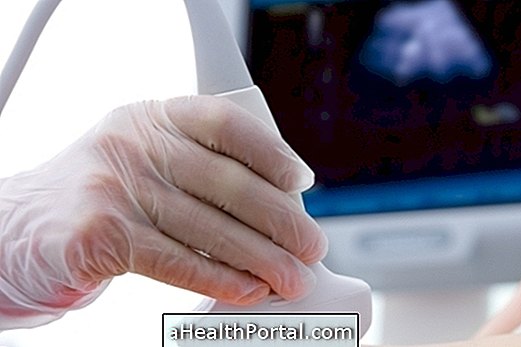Morphological ultrasound, also known as morphological ultrasonography, is an image examination that allows the baby to be visualized inside the uterus, making it easier to identify some diseases or malformations such as Down's Syndrome or congenital heart diseases, for example.
Normally, ultrasound is indicated by the obstetrician in the second trimester, between 18 and 24 weeks and therefore, in addition to malformations in the fetus, it may already be possible to identify the sex of the baby. In addition, the morphological ultrasound marks the first moment in which the parents can see in detail the baby that is developing.
Although the price of ultrasound can vary between 100 and 200 reais, depending on the clinic, it can also be done free of charge in the SUS, but only after 20 weeks of gestation.
Find out what other tests should be done during the second trimester of pregnancy.

When to perform the morphological ultrasound
It is recommended to perform the ultrasound ultrasound in the second trimester, between 18 and 24 weeks of gestation, because it is when the baby is already sufficiently developed. However, this ultrasound can also be done in the first trimester, between the 11th and the 14th week of gestation, but since the baby is still not well developed, the results can go wrong.
Morphological ultrasound can also be performed in the third trimester, between 33 and 34 weeks of gestation, but this usually only happens when:
- the pregnant woman did not perform the ultrasound in the 1st or 2nd trimester;
- there is suspicion of malformation in the baby;
- the pregnant woman has developed an infection in the pregnancy that could hinder the development of the baby.
In addition to the ultrasound ultrasound, 3D and 4D ultrasound show details of the baby's face and also identify diseases.
What is the morphological ultrasound
The morphological ultrasound allows to identify several types of alterations in the development of the baby and, therefore, it helps the obstetrician to:
- Confirm the baby's gestational age;
- Assess the size of the baby by measuring the head, chest, abdomen and femur;
- Assess the baby's growth and development;
- Monitor baby's heart rate;
- Locate the placenta;
- Show abnormalities in the baby and possible diseases or malformations.
In addition, when the baby is open-legged the doctor may also be able to observe the sex of the baby, which can then be confirmed with blood tests, for example. Check out a list of available techniques to try to identify the sex of the baby.
What diseases can be identified
Morphological ultrasound done in the second trimester can help identify various problems in baby development such as spina bifida, anencephaly, hydrocephalus, diaphragmatic hernia, kidney changes, Down syndrome or heart disease.
Here's what normal baby development looks like at 20 weeks.
How to Prepare for Ultrasound
Usually, no special preparation is required to perform a morphological ultrasound. However, since the full bladder can help improve imaging and elevate the uterus, the obstetrician may advise drinking water before the examination, as well as avoiding to completely empty the uterus. bladder if you feel like going in the bathroom.

























